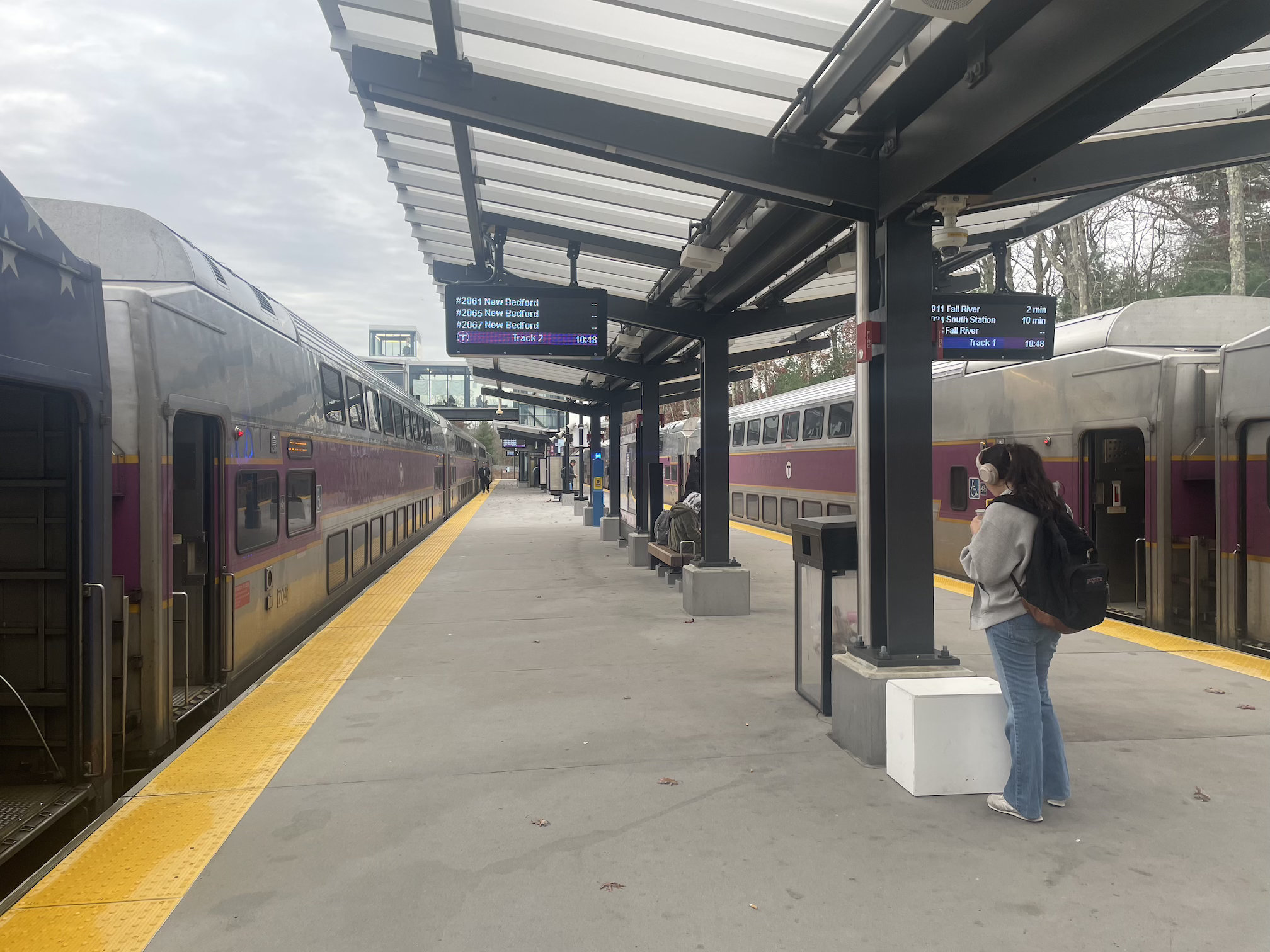Last fall, the Massachusetts Office of the State Auditor issued a 96-page report that called on the state to increase infrastructure spending for the rural counties of western Massachusetts, where towns and small cities are struggling to maintain sprawling networks of roads and highways.
However, the report failed to address one of the biggest challenges facing the Commonwealth’s rural communities: the fact that their near-exclusive focus on motorized vehicle travel isn’t merely financially unsustainable, but also largely incompatible with the state’s climate goals, which will require a much less energy-intensive transportation system.
The Auditor’s report, “Public Infrastructure in Western Massachusetts: A Critical Need for Regional Investment and Revitalization,” focused on a broad range of rural infrastructure needs, including roads and bridges, culverts, high-speed internet, municipal building repair, economic development, and the need for changes in state and federal funding programs that often put smaller municipal applicants at a disadvantage.
Infrastructure plays a major part in Massachusetts' climate change present and future. Currently, over 65% of the state's emissions come from the transportation and building sectors, with transportation as the biggest source of greenhouse pollutants in the Commonwealth.
Tackling the sectors this report is focused on is essential for ensuring that the state meets its emission reduction targets. But the closest the report comes to discussing climate change is with a mention of the Municipal Vulnerability Preparedness Program (MVP), a state funding program that funds climate-resilient infrastructure upgrades.
State Auditor Suzanne M. Bump declined to respond to a request for comment on this article.
Instead of envisioning how rural transportation could align with the state’s climate goals, the report mostly focused on the lack of funding available for rural municipalities to maintain their 20th-century road networks.
Roads are one of the most expensive infrastructure needs among rural communities. The Auditor’s office estimates that the 101 local governments in four western Massachusetts counties collectively spend $100 million every year on local road work.
Based on a survey of 45 Western Massachusetts towns and cities, these municipalities both lack quality infrastructure and don’t have funds to improve their roads. 80% of survey respondents gave their local roadways a grade of C or D, and the Auditor's office estimates that it would take an additional $75 million every year to address their perceived road maintenance needs.
But the region’s dependence on a car-centric, 20th-century transportation system isn’t merely a problem for municipal leaders trying to balance their budgets. It’s also a problem for many rural households that struggle to pay the high costs of car ownership and waste hundreds of hours a year in long commutes.
It also doesn’t help that many Western Massachusetts communities are poorer than more urban parts of the state.
The Auditor’s report calls on the Legislature to increase its funding for rural communities through the Chapter 90 program—a state program that subsidizes municipal construction work on local roadways.
Current Chapter 90 funds are allocated according to a weighted formula based on a municipality’s road mileage, population, and local employment. The Pioneer Valley city of Greenfield, with 102 miles of eligible roadway and a population of 17,456, got $631,445 in Chapter 90 funds this year, while the much wealthier Town of Brookline, with 93 miles of eligible roadway but three times as many residents as Greenfield, got $927,836.
The Auditor's office recommends giving a heavier weight to road mileage in Chapter 90 funding, and references a bill from Rep. William Pignatelli that would accomplish that policy (H. 3572).
According to the authors of the “Public Infrastructure in Western Massachusetts” report, “this proposal would place more weight in the formula on road miles, rather than population and employment, benefitting municipalities with smaller populations by granting them more funds. Under this proposed formula, for example, 31 of the 32 communities in Berkshire County would see their allocations increased even while maintaining the current appropriation level.”
“Chapter 90 is a lifeline for towns and cities to repair their roads and bridges,” Representative Pignatelli told StreetsblogMASS, “but the formula is seriously flawed and needs to be reformed.”
As it stands, Franklin, Hampden and Berkshire counties all receive fewer Chapter 90 dollars per roadway mile than the average Massachusetts county. Making road mileage the benchmark for funding, rather than population, would shift more funding to more sparsely-populated corners of the state.
Pignatelli senses an appetite among his community to have less car-dependent lives, but until public transport like buses and rail become more accessible and available, rural residents will remain car-dependent, he told StreetsblogMASS.
“Our regional bus transit is only on the main roads. Unless you live on those routes, you'll never ride on the Berkshire Regional Transit Authority,” said Pignatelli. “I would personally like to see smaller buses, smaller vans, more fuel efficient vehicles, scattered all about in our rural communities to give people the chance to ride public transit.”
However, there are already a surprising number of car-free households in rural parts of Massachusetts, especially in small cities and towns that have preserved walkable downtown districts. The U.S. Census Bureau estimates that about 1 in 12 Berkshire County households are car-free; in downtown Pittsfield, 1 in 3 households don’t own a car.
Those households point to another potential solution: investing in more energy-efficient transportation modes that could make more rural families less car dependent.
For now, the state’s climate strategy is primarily focused on simply replacing gas-powered vehicles with EVs – but that strategy fails to address rural communities’ struggles to pay for roadway maintenance, and car buyers in the Commonwealth’s poorer communities have been less likely to take advantage of the state’s EV subsidy programs.
Far from offering a solution to rural communities’ infrastructure problems, the Auditor’s report makes it clear that Massachusetts state and local governments lack a clear strategy for how more rural parts of the Commonwealth might actually meet state climate goals while transitioning to more affordable, energy-efficient infrastructure.Now that Congress has passed an infrastructure law, and continues debating other possible legislation, more federal dollars are expected to start coming into the state. Many of these dollars will be earmarked for upgrades and investments to Massachusetts roads and bridges, including how they are designed, developed, and what modes of transport they accommodate.
Rural communities face a choice for their futures: whether they continue single-occupancy, car-dependent lifestyles, or begin transitioning to something cleaner, greener, and more economically efficient.
Andrew Ahern is a freelance writer from Massachusetts, currently working and living in Vermont.






